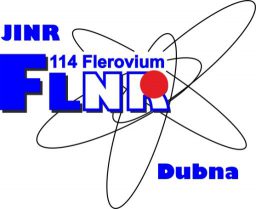Synthesis and study of decay properties of Lv isotopes in 238U + 54Cr and 242Pu + 50Ti reactions/Composite and Hybrid Functional Nanomaterials Based on Track Membranes Modified Using Sputtering Technologies: Ongoing R&D programme at the Centre of Applied Physics and South African Universities.
27.02.2025 – FLNR Scientific Seminar, 15-30, FlerovLab Conference Hall
Rossouw A., FLNR, JINR
Composite and Hybrid Functional Nanomaterials Based on Track Membranes Modified Using Sputtering Technologies: Ongoing R&D programme at the Centre of Applied Physics and South African Universities.
(in connection with the election for the position of s.r.s.)
The development of composite and hybrid nanomaterials is increasingly critical to addressing the rising demand for high-performance filtration, separation, and adsorption technologies. The South African and Centre of Applied Physics teams are focused on advancing track membranes (TMs) with enhanced functional properties through modifications that adjust the hydrophilic-hydrophobic balance, impart photocatalytic activity, and introduce specific selectivity. These properties are especially relevant in membrane applications in both South Africa and Russia. Nanomaterial-modified TMs hold exciting potential for innovations in membrane technologies and medical applications. Our primary goal is to enhance the performance and versatility of TMs. Techniques such as magnetron sputtering and electrospinning enable precise, targeted modification of TM surfaces, facilitating the creation of composite and hybrid membranes with tailored functionalities. These include increased durability, selective adsorption, and enhanced fouling resistance, making them promising candidates for applications in water purification, biotechnology, and medicine.
Ibadullaev D., FLNR, JINR
Synthesis and study of decay properties of Lv isotopes in 238U + 54Cr and 242Pu + 50Ti reactions.
(in connection with the election for the position of j.r.s.)
238U(54Cr, 4n)288Lv and 242Pu(50Ti, 3-4n)288,289Lv were studied using DGFRS-2 separator at the FLNR SHE Factory. Three new isotopes were discovered: two 288Lv α-decaying nuclei with Eα = 11.08 MeV α-particle energy and half-life T1/2 = 2 ms, 289Lv with Eα = 10.9 МэВ, T1/2 = 2.4 ms, as well as 280Cn spontaneously fissioning nucleus with T1/2 = 10 μs which was registered after the first observation of 284Fl α-decay with Eα = 10.57 MeV. In addition to it pxn-decay of 242Pu + 50Ti was registered for the first time which previously hadn’t been observed in 48Ca induced reactions. Cross sections of 242Pu + 50Ti reaction for 3n- and 4n-channels were measured amounted to 0.32 pb and ~ 0.22 pb correspondingly at the excitation energy of 292Lv compound nucleus E* = 41 MeV. The cross sections of 4n-evaporation channel in 238U + 54Cr reaction resulting in the same compound nucleus at E* = 42 MeV was ~ 36 pb that turned out to be approximately 15 times lower than total cross section of 242Pu + 50Ti reaction at a close excitation energy. Thus for the first time it was proven experimentally that the reactions of actinide element isotopes with 50Ti an order of magnitude more preferable for the synthesis of new 119 and 120 elements than reactions with 54Cr.
Ибадуллаев Д.
(в связи с выборами на должность м.н.с.)
Синтез и изучение свойств распада изотопов элемента Lv в реакциях 238U + 54Cr and 242Pu + 50Ti
Реакции 238U(54Cr, 4n)288Lv и 242Pu(50Ti, 3-4n)288,289Lv были изучены на газонаполненном сепараторе DGFRS-2 на фабрике СТЭ в ЛЯР ОИЯИ. Были обнаружены три новых изотопа: два α-распадающихся ядра 288Lv с энергией α-частиц Eα = 11.08 МэВ и периодом полураспада T1/2 = 2 мс, 289Lv с Eα = 10.9 МэВ, T1/2 = 2.4 мс, а также самопроизвольно делящееся ядро 280Cn с T1/2 = 10 мкс, которое было зарегистрировано после первого наблюдения α-распада 284Fl с Eα = 10.57 МэВ. Кроме того, впервые был зарегистрирован pxn-распад 242Pu + 50Ti, который ранее не наблюдался в реакциях, индуцированных 48Ca. Были измерены сечения реакции 242Pu + 50Ti для 3n- и 4n-каналов, составившие ~ 0.32 пб и ~ 0.22 пб соответственно, при энергии возбуждения составного ядра 292Lv E* = 41 МэВ. Сечение канала 4n-испарения в реакции 238U + 54Cr, ведущей к тому же составному ядру, при E* = 42 МэВ составило ~ 36 фб, что оказалось приблизительно в 15 раз ниже суммарного сечения реакции 242Pu + 50Ti при близкой энергии возбуждения. Таким образом, впервые было экспериментально доказано, что реакции изотопов актинидных элементов с 50Ti на порядок предпочтительнее реакций с 54Cr для синтеза новых элементов 119 и 120.
